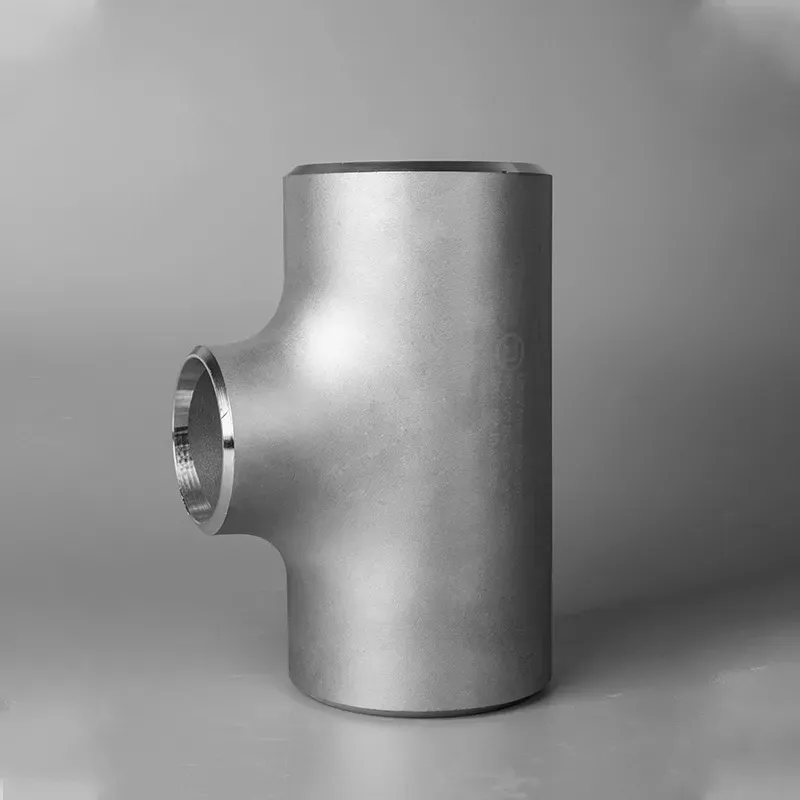-
Cangzhou Yulong Steel Co., Ltd.
-
Phone:
+86 13303177267 -
Email:
admin@ylsteelfittings.com
- English
- Arabic
- Italian
- Spanish
- Portuguese
- German
- kazakh
- Persian
- Greek
- French
- Russian
- Polish
- Thai
- Indonesian
- Vietnamese
- Zulu
- Korean
- Uzbek
- Hindi
- Serbian
- Malay
- Ukrainian
- Gujarati
- Haitian Creole
- hausa
- hawaiian
- Hebrew
- Miao
- Hungarian
- Icelandic
- igbo
- irish
- Japanese
- Javanese
- Kannada
- Khmer
- Rwandese
- Afrikaans
- Albanian
- Amharic
- Armenian
- Azerbaijani
- Basque
- Belarusian
- Bengali
- Bosnian
- Bulgarian
- Catalan
- Cebuano
- China
- China (Taiwan)
- Corsican
- Croatian
- Czech
- Danish
- Esperanto
- Estonian
- Finnish
- Frisian
- Galician
- Georgian
- Kurdish
- Kyrgyz
- Lao
- Latin
- Latvian
- Lithuanian
- Luxembourgish
- Macedonian
- Malgashi
- Malayalam
- Maltese
- Maori
- Marathi
- Mongolian
- Myanmar
- Nepali
- Norwegian
- Norwegian
- Occitan
- Pashto
- Dutch
- Punjabi
- Romanian
- Samoan
- Scottish Gaelic
- Sesotho
- Shona
- Sindhi
- Sinhala
- Slovak
- Slovenian
- Somali
- Sundanese
- Swahili
- Swedish
- Tagalog
- Tajik
- Tamil
- Tatar
- Telugu
- Turkish
- Turkmen
- Urdu
- Uighur
- Welsh
- Bantu
- Yiddish
- Yoruba

Nov . 11, 2024 09:10 Back to list
flange slip on class 150
Understanding Flange Slip-On Class 150 A Comprehensive Guide
Flanges play a critical role in pipe fittings, providing the necessary means to connect pipes, valves, pumps, and other equipment to create a piping system. Among the various types, the slip-on flange, particularly in Class 150, is widely used across numerous applications due to its ease of installation and reliability. This article delves into the characteristics, benefits, applications, and considerations of using flange slip-on Class 150 in various industries.
What is a Slip-On Flange?
A slip-on flange is a type of pipe flange that can be easily slid over the end of a pipe. It is designed to fit snugly around the pipe, and it is then welded in place at both the top and bottom. The simplicity of the design allows for easy alignment and installation, making it a preferred choice in many applications. For Class 150 flanges, the standard pressure rating is significant as it dictates the maximum allowable working pressure for the flange material.
Class Ratings and Specifications
Flange classifications are primarily based on pressure rating, material, and temperature capabilities. Class 150 flanges are commonly made from materials such as carbon steel, stainless steel, or alloy steel and are suitable for various temperature ranges. It is crucial to choose the right material based on the specific operational demands, including temperature, pressure, and the nature of the fluids being transported.
The pressure rating of Class 150 implies that the flange can typically handle pressures up to 150 psi at a temperature of 100°F. As temperatures rise, the pressure rating decreases, making it essential to consult specifications when planning for operational conditions.
Benefits of Using Slip-On Flanges
1. Ease of Installation One of the most significant advantages of slip-on flanges is their straightforward installation process. Since they simply slide onto the pipes, they do not require extensive preparation or tools, reducing labor time and costs.
2. Alignment The design allows for easy alignment with the pipe, which is crucial when assembling a piping system. Proper alignment helps in minimizing stress on the system and prolonging the lifespan of the components.
3. Cost-Effectiveness Slip-on flanges are generally less expensive than other types of flanges, making them a cost-effective solution for many projects, particularly in large-scale installations.
4. Versatility These flanges can be used in various industries, including oil and gas, chemical processing, water supply, and HVAC systems, which contributes to their widespread acceptance.
flange slip on class 150

Applications of Flange Slip-On Class 150
Flange slip-on Class 150 finds applications in a vast array of industrial scenarios, including
- Pipelines Used for connecting pipes in water and gas pipelines. - HVAC Systems Utilized in heating, ventilation, and air conditioning systems for both residential and commercial buildings. - Chemical Plants Frequently found in chemical processing applications due to their ability to handle various fluids. - Water Treatment Ideal for systems involving the transport and treatment of water. In each of these applications, the reliability and ease of maintenance of Class 150 slip-on flanges contribute positively to operational efficiency.
Considerations When Using Slip-On Flanges
While slip-on flanges offer numerous benefits, there are a few considerations to keep in mind
1. Welding Quality The performance of a slip-on flange heavily relies on the quality of the welding. Improper welding can lead to leaks or failure under pressure.
2. Thickness and Material It’s important to select the appropriate thickness and materials based on the operating conditions. For high-pressure systems, a different flange class may be warranted.
3. Corrosion Resistance Depending on the fluid or gas being transported, consider the longevity of the chosen material to prevent corrosion issues.
4. Maintenance Regular inspections and maintenance are necessary to ensure the integrity of the flanged joints, particularly in high-stress environments.
Conclusion
Flange slip-on Class 150 offers a blend of reliability, cost-effectiveness, and ease of use, making it a popular choice among engineers and project managers. Understanding its features, benefits, applications, and installation considerations is vital for any industry professional looking to implement efficient and durable piping systems. By selecting the appropriate materials and ensuring quality installation, users can maximize the benefits of these essential components in modern piping systems.
Latest news
-
ANSI 150P SS304 SO FLANGE
NewsFeb.14,2025
-
ASTM A333GR6 STEEL PIPE
NewsJan.20,2025
-
ANSI B16.5 WELDING NECK FLANGE
NewsJan.15,2026
-
ANSI B16.5 SLIP-ON FLANGE
NewsApr.19,2024
-
SABS 1123 FLANGE
NewsJan.15,2025
-
DIN86044 PLATE FLANGE
NewsApr.19,2024
-
DIN2527 BLIND FLANGE
NewsApr.12,2024
-
JIS B2311 Butt-Welding Fittings LR/SR 45°/90° /180°Seamless/Weld
NewsApr.23,2024











